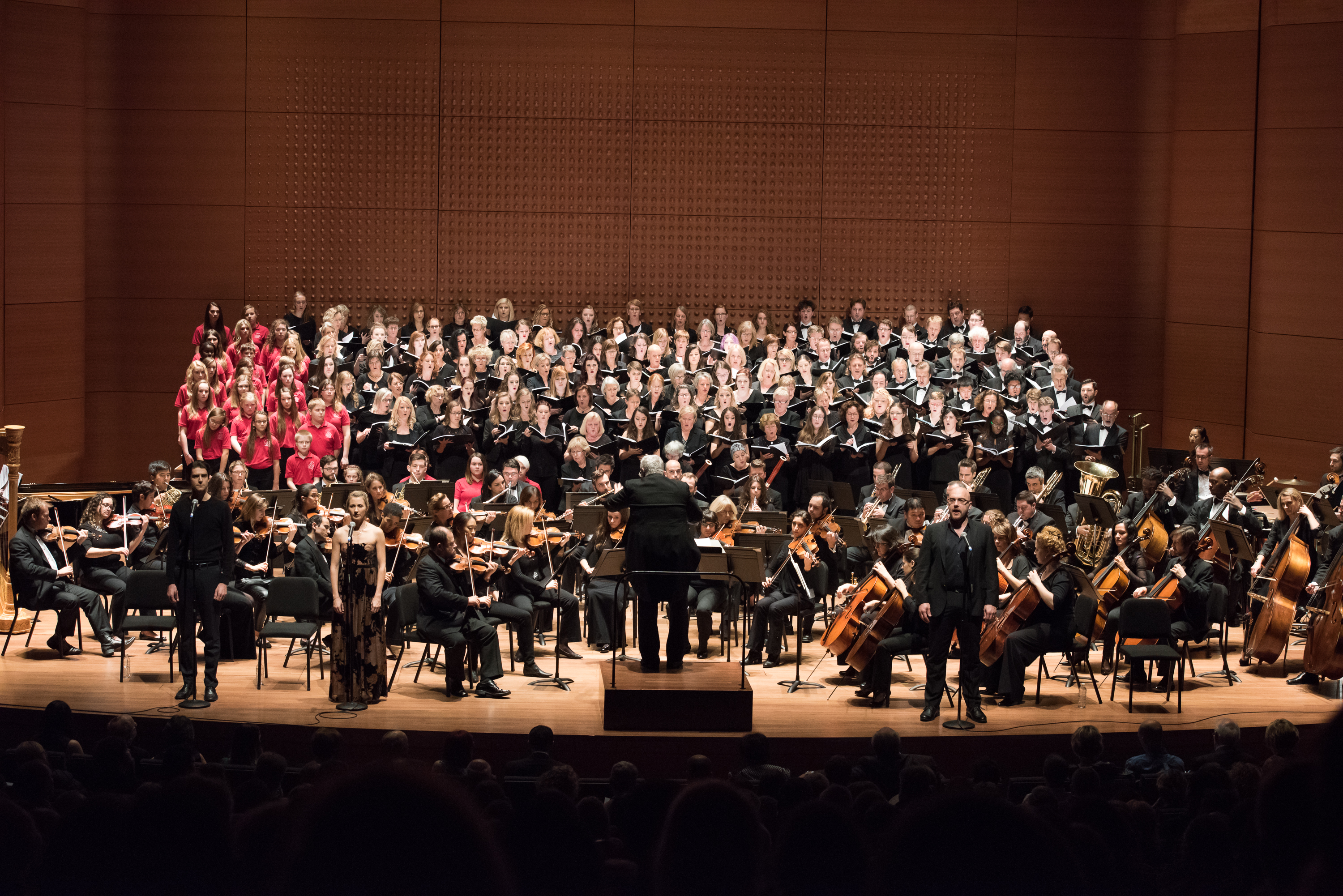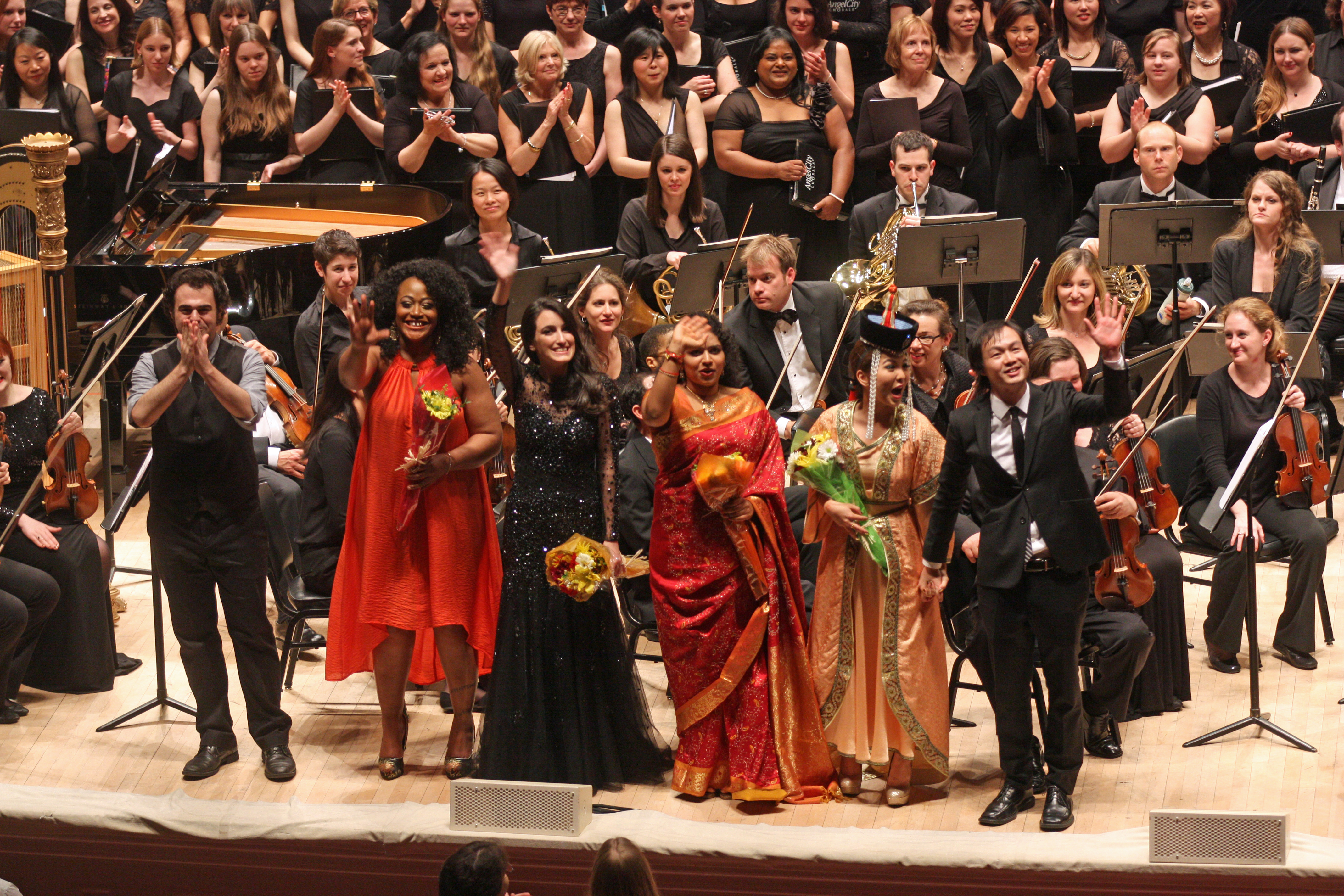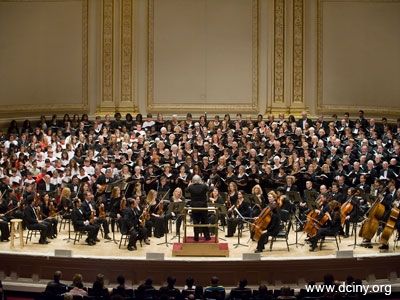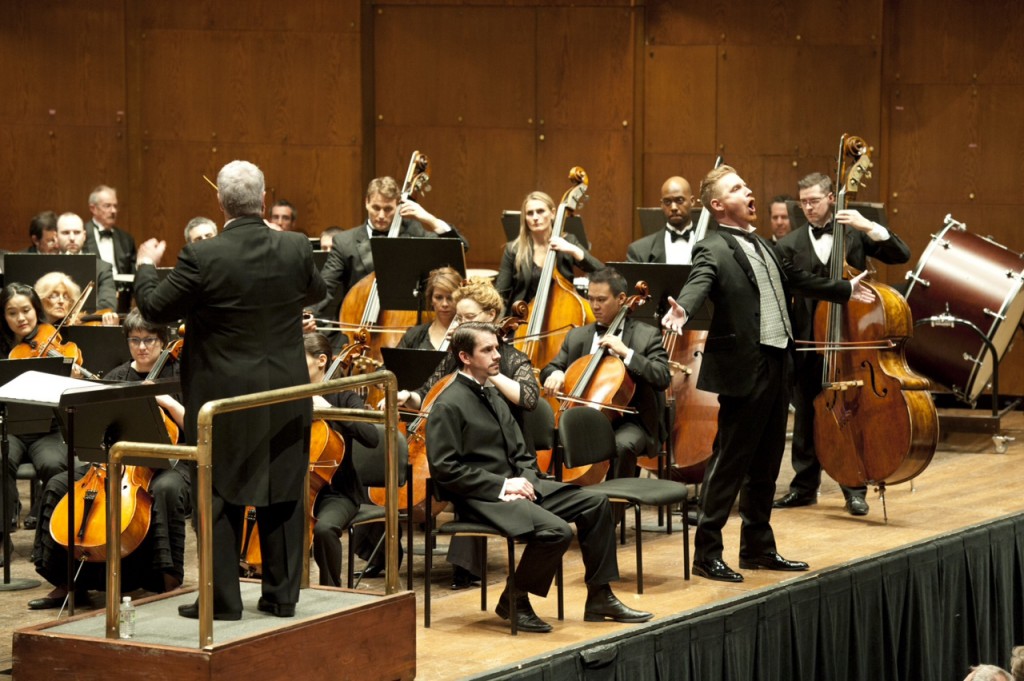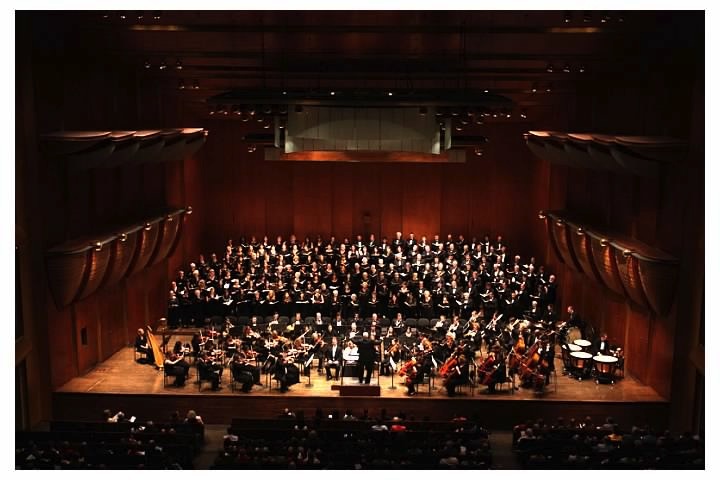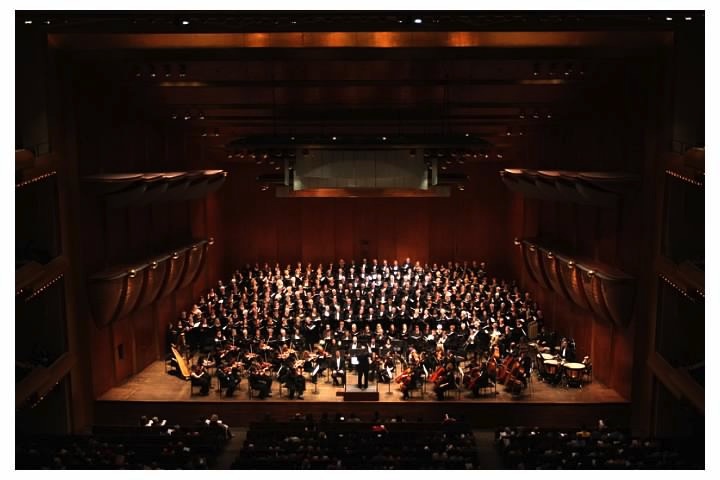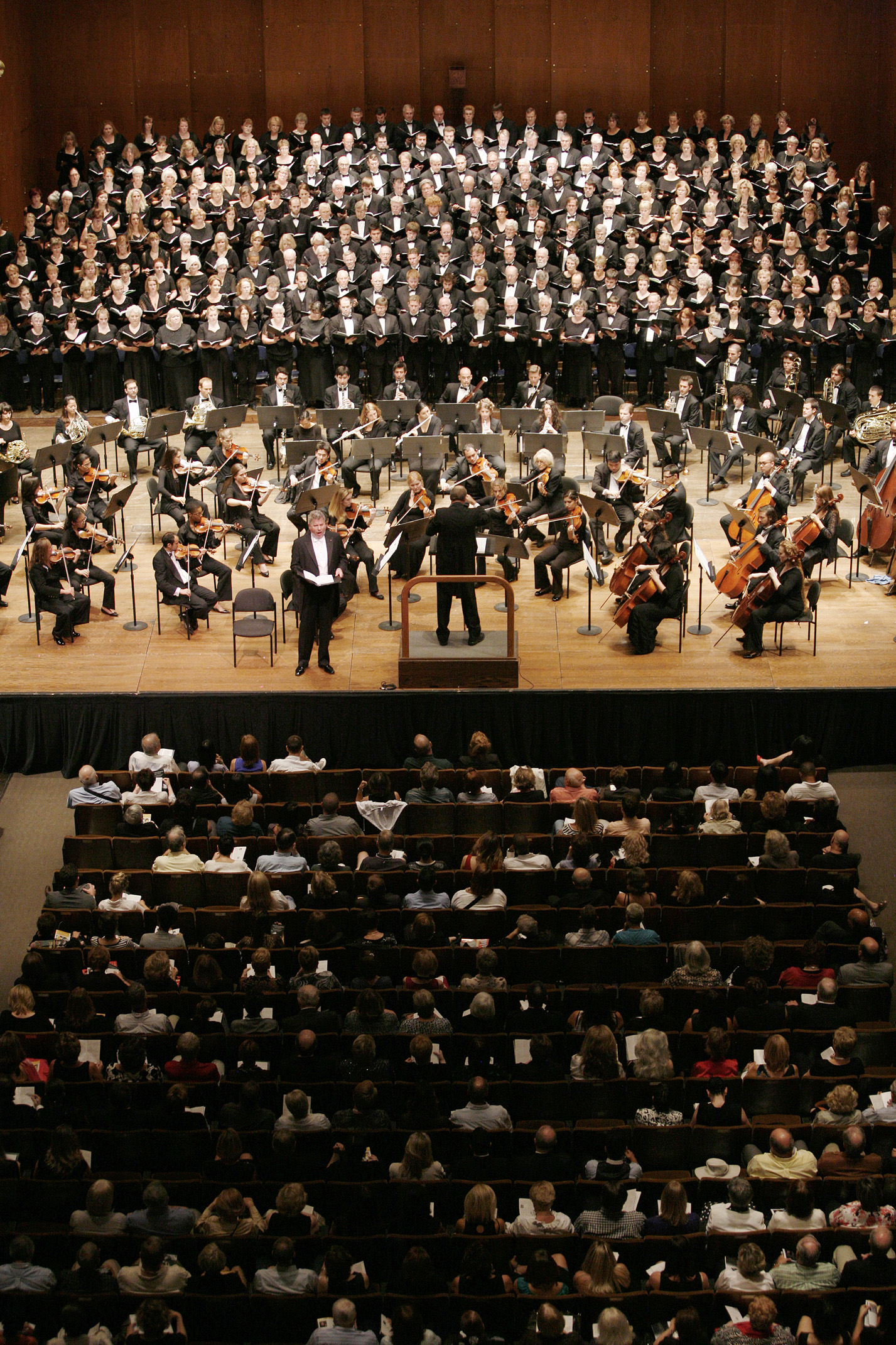As one who has been to many concerts given by Distinguished Concerts International New York (DCINY), I am very familiar with the “formula” employed; a joyful and/or uplifting theme presented on a large-scale, with world-class guest artists and exciting new compositions with singers of all ages from around the globe. The concert entitled “I Believe…Remembering the Holocaust” captured some of those ideals, but to call a performance in remembrance of what was arguably the most horrific example of cruelty in mankind’s history “joyous” would be inconceivable; it was, however, a thought-provoking and emotionally charged evening that would have been moving even to the hardest heart. A portion of the ticket sales went to benefit the Holocaust Resource Center of Temple Judea, in Manhasset, New York.
Singers from Connecticut, Washington DC, Florida, Virginia, California, Austria, Germany, Canada, and “individuals from around the globe” joined together with the Distinguished Concerts Orchestra in the United States premieres of two works- In the Shadow of the Holocaust and I Believe.
In the Shadow of the Holocaust is a thirteen-movement work featuring music from the archives of Holocaust survivor Aleksander Kulisiewicz (1918-1992), an amateur singer and songwriter, and compiler of songs from his five years of imprisonment. Donald McCullough selected and arranged music from this archive, but also decided to include articles and letters as well to be read before each section. Opening with a sorrow-filled lament played by a cello soloist, the tone was set for a work of sadness, strength, dignity in the face of unspeakable horror, and undying hope. Mr. McCullough proved himself to be not only a capable arranger, but also an effective and sensitive conductor. In my opinion, the selected readings gave the work the foundation of its power. The readers were all excellent, but I must single out Janet Snell in her reading of Letter to Mom. Her reading was so convincing that I am still emotionally devastated – it was absolutely one of the most heartbreaking things I have ever heard. The cello soloist was Caitlin Sullivan, who played with the skill of a first-rate performer and the understanding and emotional projection of a true artist throughout the work. Vocal soloists Sara Jean Ford, Rachel Arky, and Peter Kendall Clark were not to be overshadowed in their featured roles. After the end of the last movement, the silence hung in the air for what seemed an eternity. Mr. McCullough silently closed the score, set his baton down on the podium and turned to face the audience. It almost seemed that to applaud would have been inappropriate after this emotionally draining journey, but at last the silence was broken, and a justly deserved ovation was given to the performers.
I Believe, composed by Zane Zalis, was the second half. This twelve-movement work is well over an hour in length (the program listing it as sixty-five minutes) and has been called a “Holocaust Oratorio”. This designation is apt, but not in the conventional sense of the word. I consider I Believe to have much more in common with Broadway songs then the operatic styles of a conventional oratorio. Far from being a criticism, this quality is in my opinion the strength of this piece, the element that makes it “work.” It is accessible and has appeal to a wide range of listeners. I Believe follows the timeline of the genesis of the Holocaust through the aftermath. It would be beyond the scope of this review to detail each movement, but I highly recommend the reader to visit http://www.ibelieveproject.org/about-excerpts-chapter01.php to explore the story behind each movement.
Broadway singing sensation Sara Jean Ford was an ideal choice for the role of Tova. The child-like innocence of Tova was captured with the added dimension of a soaring, beautiful voice for songs that demanded a singer with her qualities. Alexander Gemignani, as the vile Reinhardt, was a revelation. He was so effective in his role that I found myself despising him with a vengeance each time he spoke, especially when he spewed out the hate-filled rants of Adolf Hitler. Drew Gehling, as Aaron, projected dignity and hope with a voice that reminded me very much of Josh Groban, a singer I enjoy hearing.
Conductor Jonathan Griffith led the large forces with a steady hand in yet another excellent performance I have come to expect as par for the course from this excellent musician. The complexities of the vocal polyphony went without a hitch from the well-prepared chorus members, including a very talented children’s chorus. Barely had the last note died away when the audience leapt up in an ovation. When Mr. Zalis took to the stage, the ovation went from a thunder to a roar. It was a well-earned reaction for an amazing performance of a power-packed work.

